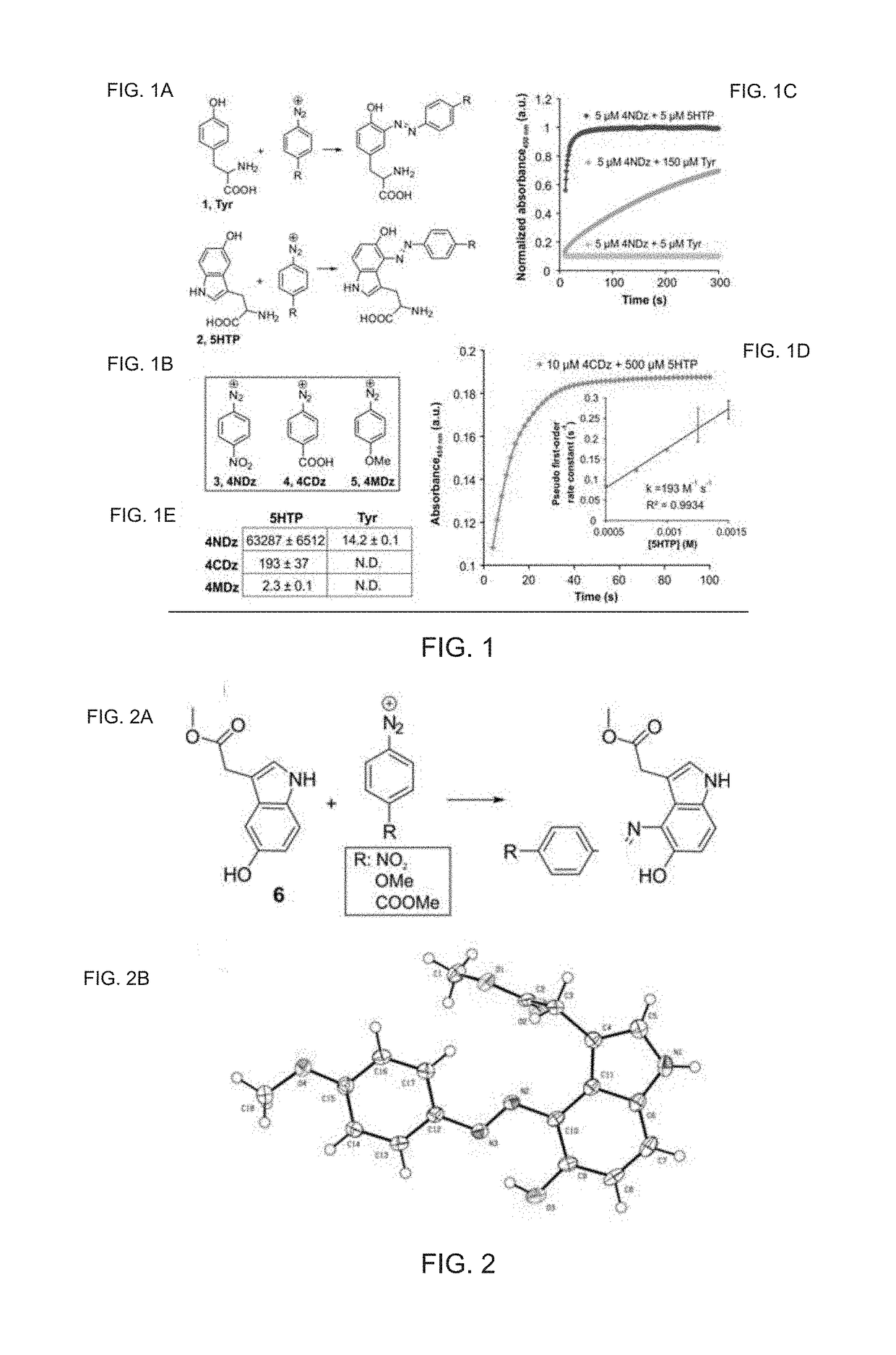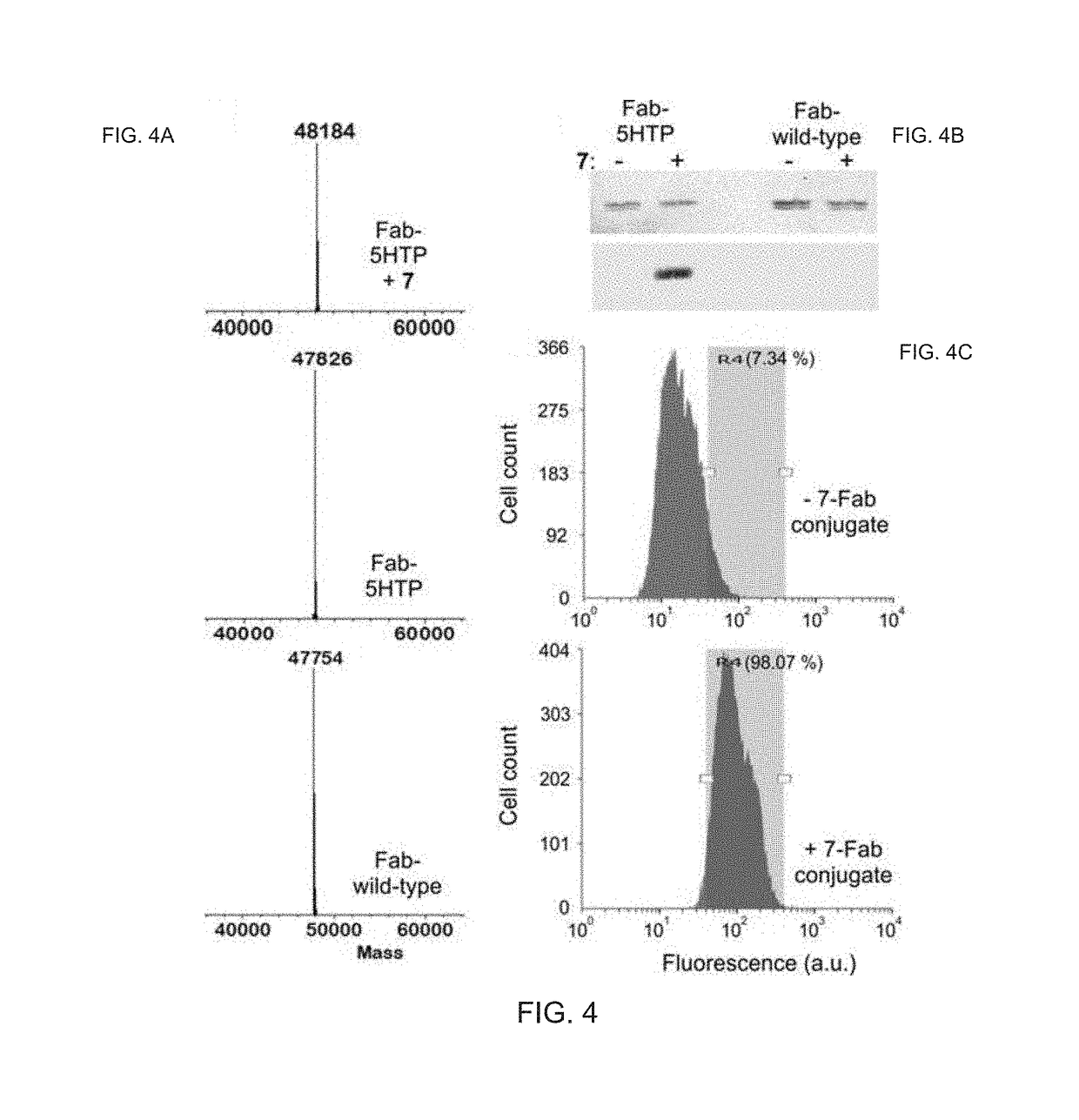Chemoselective Rapid Azo-Coupling Reaction for Bioconjugation
a bioconjugation and azocoupling technology, applied in the field of bioconjugation strategy using a chemoselective rapid azocoupling reaction, can solve the problems of slow kinetics and limited conjugation chemistries, and achieve rapid functionalization, efficient site-selective incorporation, and high degree of chemoselectivity
- Summary
- Abstract
- Description
- Claims
- Application Information
AI Technical Summary
Benefits of technology
Problems solved by technology
Method used
Image
Examples
examples
[0062]The following examples are provided to illustrate embodiments of the present invention but are by no means intended to limit its scope.
[0063]The examples described herein will be understood by one of ordinary skill in the art as exemplary protocols. One of ordinary skill in the art will be able to modify the below procedures appropriately and as necessary.
[0064]Materials and Methods
[0065]All chemicals and solvents were purchased from Sigma-Aldrich or Fischer Scientific and used without further purification. In particular, 4-nitrobenzenediazonium (4NDz) and 4-methoxybenzenediazonium (4MDz) salts were purchased from Fisher chemicals. 4-carboxydiazonium tetrafluoroborate (4MDz) was synthesized starting from 4-aminobenzoic acid under standard azo-coupling conditions. Oligonucleotides for PCR were purchased from Integrated DNA technologies. PCR reactions were performed using Phusion DNA polymerase (Thermo Fisher) according to manufacturer's protocol. The DH10b strain was used for p...
PUM
| Property | Measurement | Unit |
|---|---|---|
| mass | aaaaa | aaaaa |
| mass | aaaaa | aaaaa |
| mass | aaaaa | aaaaa |
Abstract
Description
Claims
Application Information
 Login to View More
Login to View More - R&D
- Intellectual Property
- Life Sciences
- Materials
- Tech Scout
- Unparalleled Data Quality
- Higher Quality Content
- 60% Fewer Hallucinations
Browse by: Latest US Patents, China's latest patents, Technical Efficacy Thesaurus, Application Domain, Technology Topic, Popular Technical Reports.
© 2025 PatSnap. All rights reserved.Legal|Privacy policy|Modern Slavery Act Transparency Statement|Sitemap|About US| Contact US: help@patsnap.com



